I'm an earth systems scientist and computational mathematics researcher, specialising in the development and analysis of numerical modelling systems.
My work covers topics in geophysical fluid dynamics, coupled earth system processes, numerical methods and scientific computing. A few specific interests include: high-order accurate finite-volume/difference methods for computational fluid dynamics, general-circulation modelling and ocean dynamics, unstructured mesh-generation and computational geometry.
I'm a research scientist in the Coastal Environmental Modelling Team at CSIRO, contributing to the development of CSIRO's Environmental Modelling Suite. Our team develops and uses numerical models to capture the physics of environmental systems at multiple scales of interest, from highly resolved coastal hazards to evolving climate stressors.
Sometimes I also work with my wife, artist Sara Morawetz, on more philosophical projects.
Contact: d [dot] engwirda [at] gmail [dot] com
PROJECTS
See my github profile for a full listing.
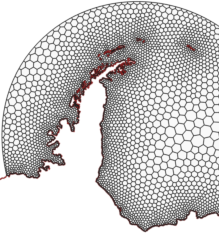
JIGSAW-GEO: a variant of my general-purpose meshing library JIGSAW, designed to generate high-quality grids for unstructured ocean/atmospheric models including MPAS, COMPAS, FESOM & PERISCOPE.
See JIGSAW-GEO(PYTHON) on github >>
See JIGSAW-GEO(MATLAB) on github >>
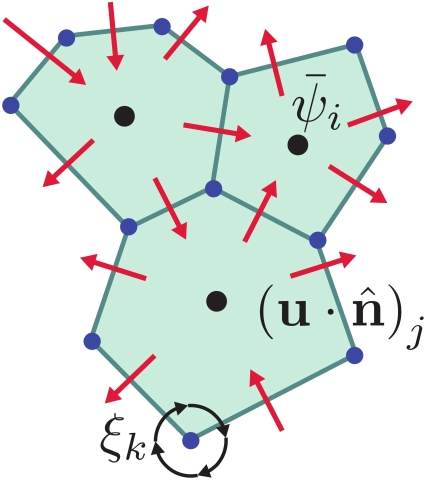
PERISCOPE: an unstructured geophysical fluid dynamics solver, designed to resolve environmental flows at multiple scales of interest.
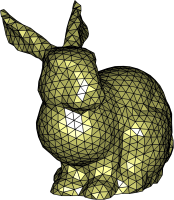
JIGSAW: a computational library for unstructured mesh generation, designed to generate high-quality triangulations and polyhedral decompositions of general planar, surface and volumetric domains.
See JIGSAW on github >>
See JIGSAW(PYTHON) on github >>
See JIGSAW(MATLAB) on github >>
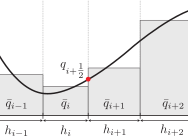
PPR: a Fortran library for high-order Piecewise Polynomial Reconstruction (PPR). This package forms the basis for high-order finite-volume and arbitrary lagrangian-eulerian (ALE) transport algorithms.
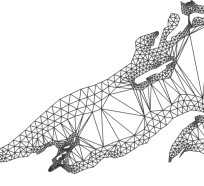
MESH2D: a MATLAB / OCTAVE-based unstructured mesh-generator for two-dimensional polygonal geometries, providing a range of relatively simple, yet effective two-dimensional meshing algorithms.
WORK-IN-PROGRESS
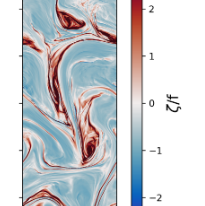
Representation of Submesoscale Dynamics Using ROMS and MPAS-O (K. Hinson, R. Hetland, D. Engwirda, K. Smith, 2024, in review)
Understanding the effective resolution of MPAS-O and ROMS.
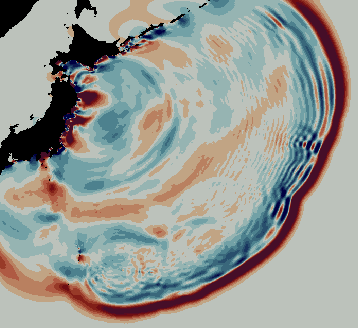
Machine learned reconstruction of tsunami dynamics from sparse observations (E. McDugald, A. Mohan, D. Engwirda, J. Santos, 2024, in review)
Using a transformer neural network to reconstruct tsunami propagation from DART buoy signals.
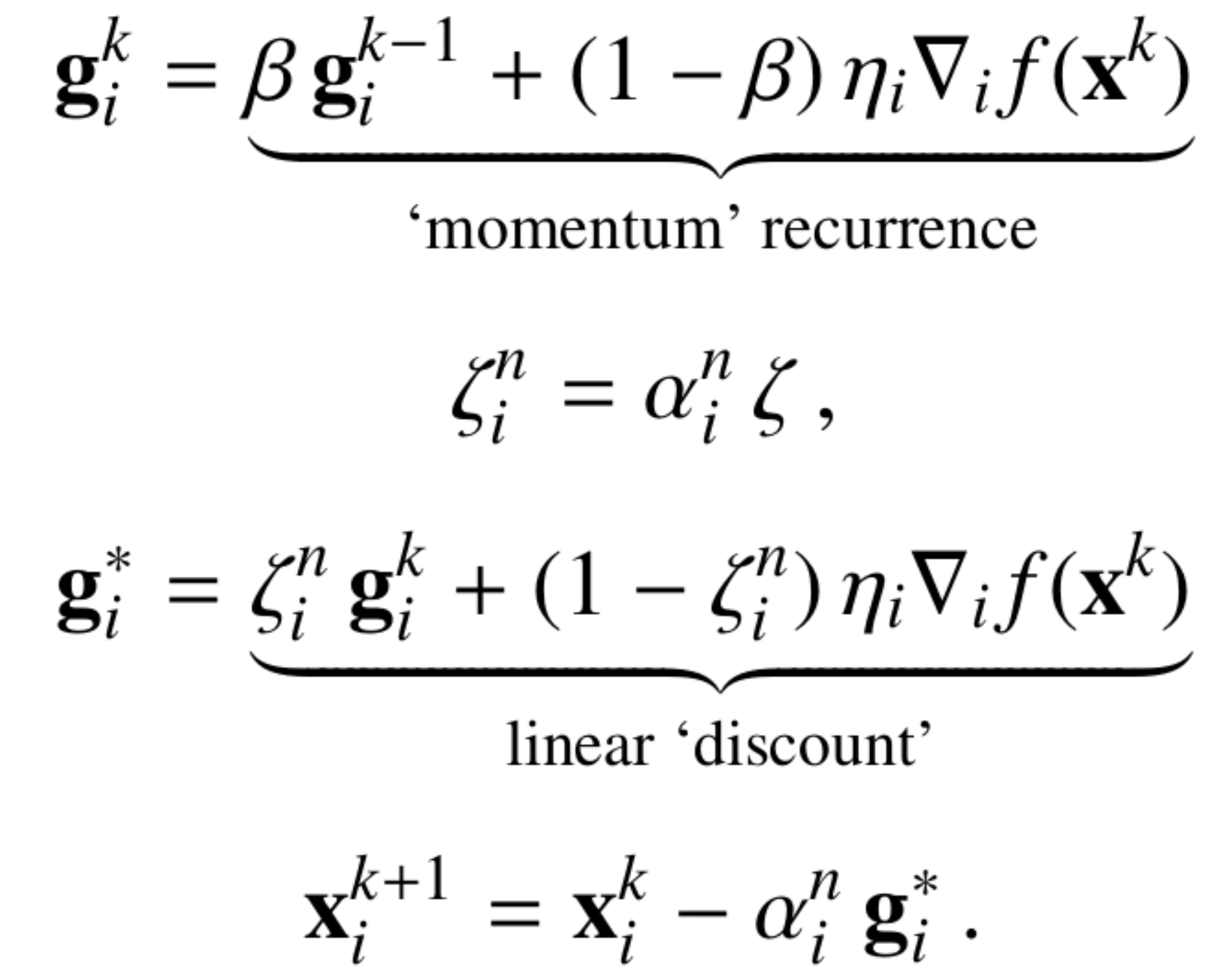
'Momentum'-type gradient descent for unstructured mesh optimisation (D. Engwirda, 2023, in prep.)
Improving the convergence of unstructured mesh optimisation using 'momentum'-based methods borrowed from the AI/ML community.
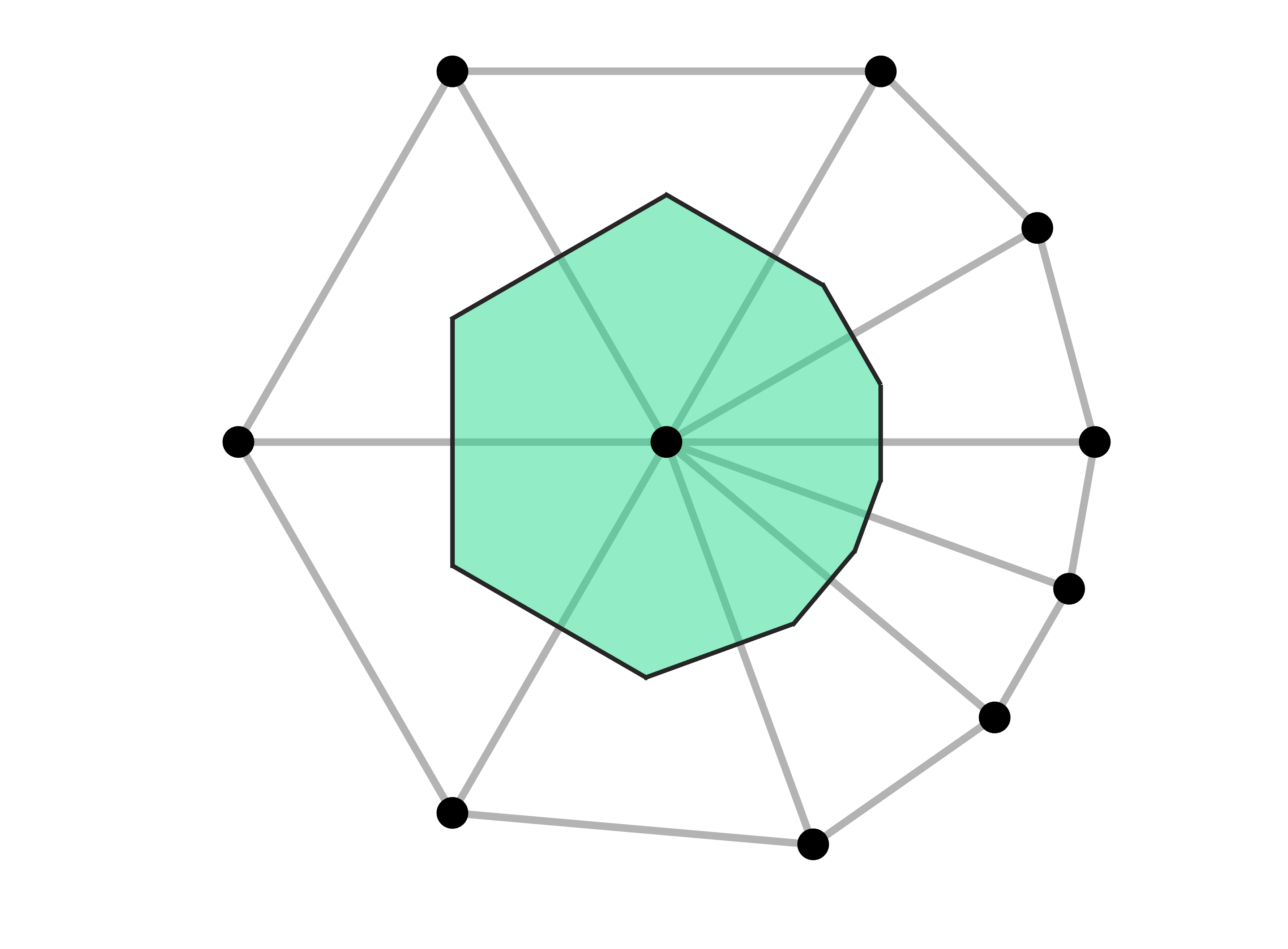
An asymmetric-cosine metric for primal-dual mesh optimisation (D. Engwirda, 2023, in prep.)
Generating 'well-centred' centroidal voronoi type meshes through an asymmetric penalisation of acute and obtuse cell angles.
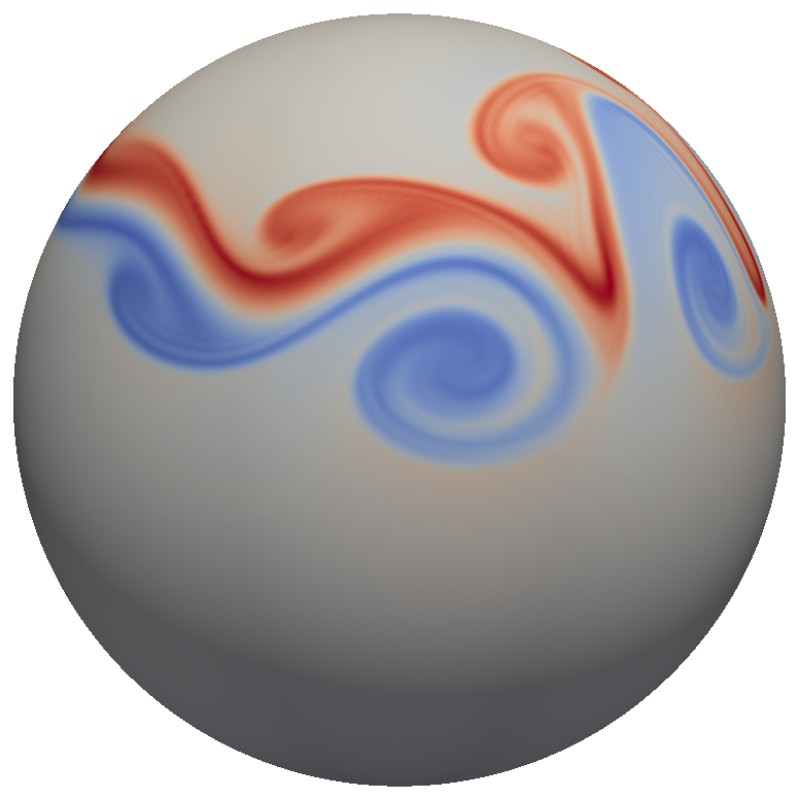
Improving the accuracy of arbitrarily structured C-grid methods for the shallow water equations (D. Engwirda, S. Calandrini, M. Petersen, 2022, in prep.)
A new 'TRiSK'-like unstructured formulation for geophysical fluid dynamics with improved order of accuracy bounds.
PUBLICATIONS
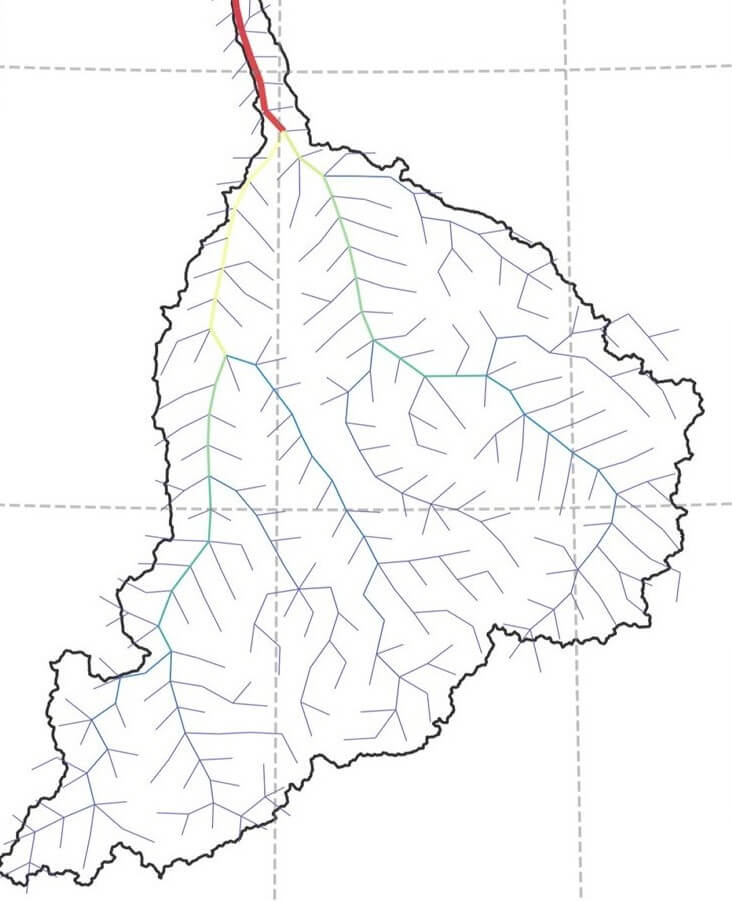
Evaluation of flow routing on the unstructured Voronoi meshes in earth system modeling
(C. Liao, D. Xu, M. Cooper, T. Zhou, D. Engwirda, Z. Tan, G. Bisht, H. Li, L. Li, D. Feng, R. Leung, 2025,
JAMES, 17(5), e2024MS004737)
https://doi.org/10.1029/2024MS004737
Evaluating the benefit of variable resolution hydrological modelling in unstructured earth system models.

Discrete global grid system flow routing datasets in the Amazon and Yukon basins
(C. Liao, D. Engwirda, M. Cooper, M. Li, Y. Fang, 2025, Earth System Science Data, 17(5), 2035-2062)
https://doi.org/10.5194/essd-17-2035-2025
Hydrological modelling using Icosahedral Snyder Equal-Area Discrete Global Grid Systems (ISEA-DGGS).
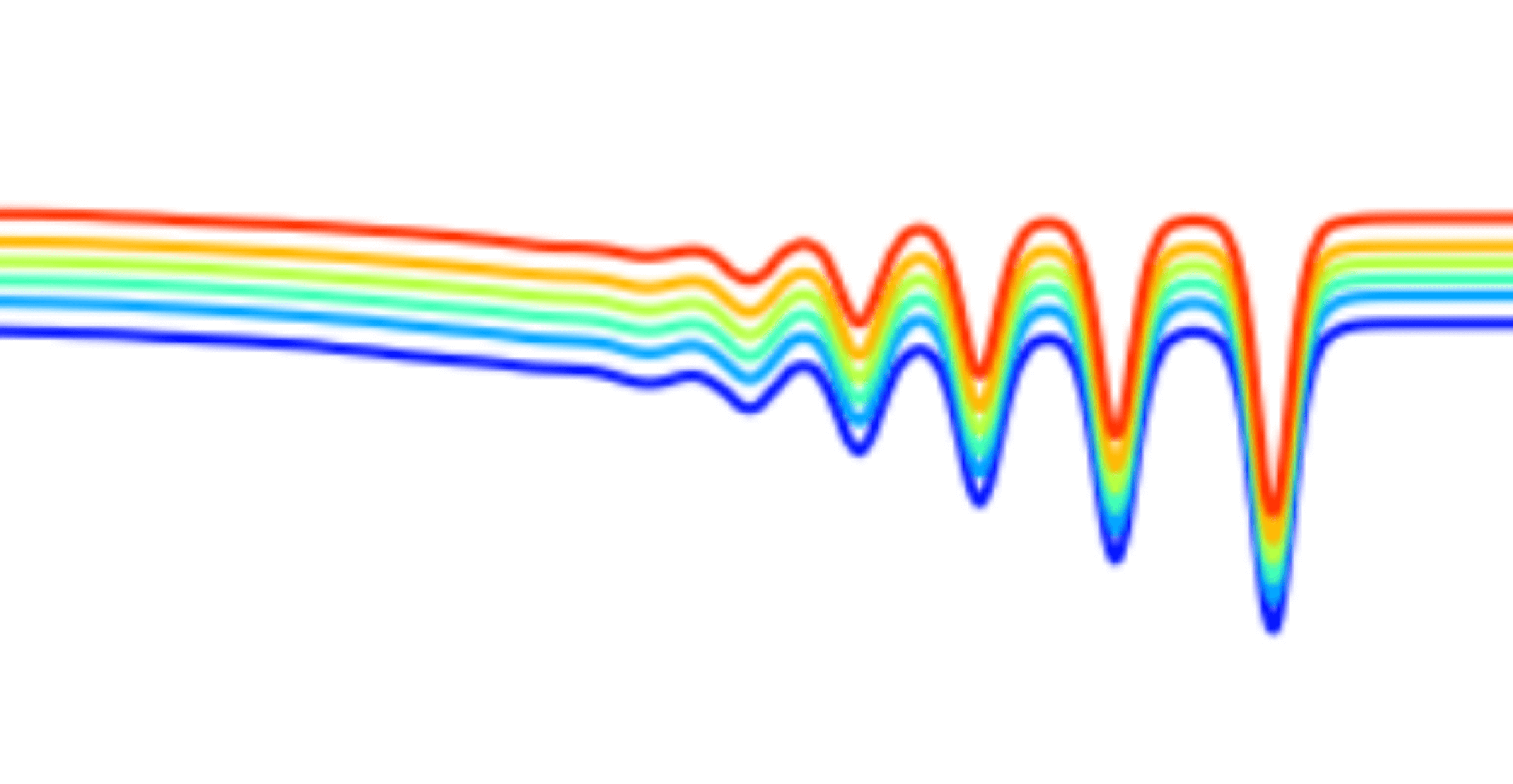
A non-hydrostatic formulation for MPAS-Ocean
(S. Calandrini, D. Engwirda, L. Van Roekel, 2025, Ocean Modelling, 102527)
https://doi.org/10.1016/j.ocemod.2025.102527
Capturing nonhydrostatic processes in MPAS-O using a pressure-correction approach.
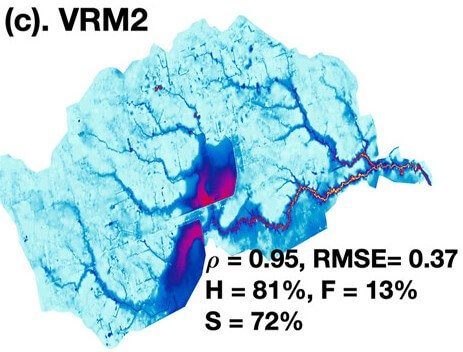
Uncertainties in simulating flooding during Hurricane Harvey using 2D shallow water equations
(D. Xu, G. Bisht, D. Engwirda, D. Feng, Z. Tan, V. Ivanov, 2025, Water Resources Research, 61(1), e2024WR038032)
https://doi.org/10.1029/2024WR038032
Evaluating the role of physics, forcing and resolution-dependent uncertainties in compound flood simulation.
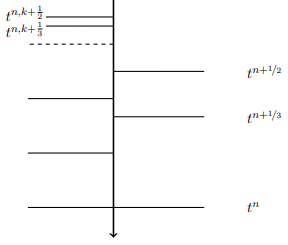
Local Time-Stepping for the Shallow Water Equations using CFL Optimized Forward-Backward Runge-Kutta Schemes
(J. Lilly, G. Capodaglio, D. Engwirda, R. Higdon, M. Petersen, 2024, JCP, 15, 113511)
https://doi.org/10.1016/j.jcp.2024.113511
Accelerating local time-stepping schemes using forward-backward Runge-Kutta schemes.

Simulation of Compound Flooding using River-Ocean Two-way Coupled E3SM Ensemble on Variable-resolution Meshes
(D. Feng, Z. Tan, D. Engwirda, J. Wolfe, D. Xu, C. Liao, G. Bisht, J. Benedict, T. Zhou, H. Li, L. Leung, 2024.
JAMES, 16(6), e2023MS004054)
https://doi.org/10.1029/2023MS004054
Understanding compound flooding during Hurricane Irene through multiscale coupling in E3SM.
-FB.png)
CFL Optimized Forward–Backward Runge–Kutta Schemes for the Shallow-Water Equations
(J. Lilly, D. Engwirda, G. Capodaglio, R. Higdon, M. Petersen, 2023.
Mon. Weather Rev., 151(12), 3191-3208.)
https://doi.org/10.1175/MWR-D-23-0113.1
A new 3-stage Runge-Kutta scheme with optimal CFL bounds for the shallow water equations.

Topological Relationship‐Based Flow Direction Modeling: Stream Burning and Depression Filling
(C. Liao, T. Zhou, D. Xu, Z. Tan, G. Bisht, M. Cooper, D. Engwirda, H. Li, L. Leung, 2023.
JAMES, 15(11), e2022MS003487.)
https://doi.org/10.1029/2022MS003487
Optimal river representation and DEM preparation for unstructured hydrological modelling.
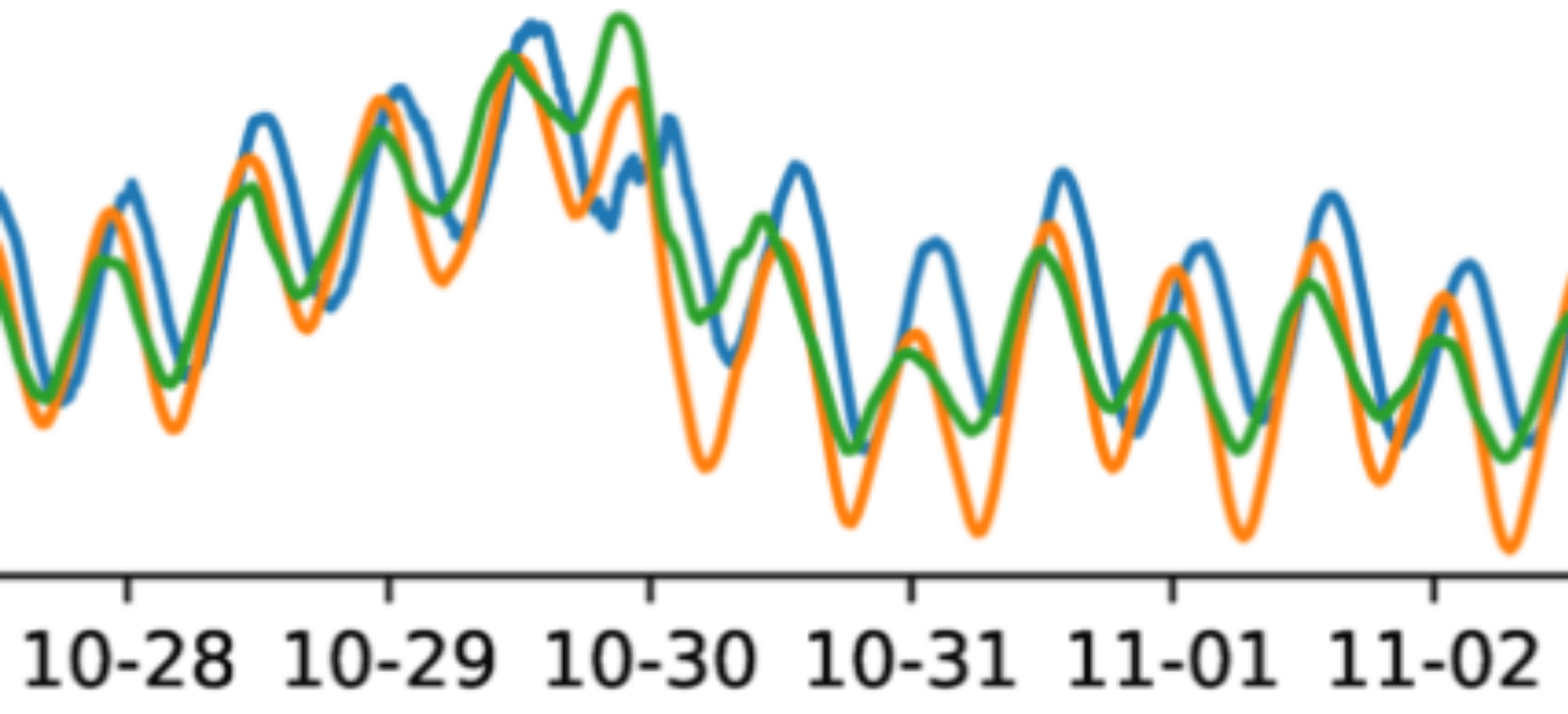
Storm Surge Modeling as an Application of Local Time-stepping in MPAS-Ocean
(J. Lilly, G. Capodaglio, M. Petersen, S. Brus, D. Engwirda, R. Higdon, 2023.
JAMES, 15(1), e2022MS003327.)
https://doi.org/10.1029/2022MS003327
Application of a spatially-refined time-stepping scheme for storm-surge modelling with MPAS-O.

Barotropic Tides in MPAS-Ocean: Impact of Ice Shelf Cavities
(N. Pal, K. Barton, M. Petersen, S. Brus, D. Engwirda, B. Arbic, A. Roberts, J. Westerink, D. Wiraset, 2023.
Geosci. Model Dev., 16(4), 1297-1314.)
https://doi.org/10.5194/gmd-16-1297-2023
Understanding the impact of ice-shelf geometry on global barotropic tides with MPAS-O.

Topological Relationship‐Based Flow Direction Modeling: Mesh‐Independent River Networks Representation
(C. Liao, T. Zhou, D. Xu, M. Cooper, D. Engwirda, H. Li, L. Leung, 2023.
JAMES, 15(2), e2022MS003089.)
https://doi.org/10.1029/2022MS003089
Capturing the topology of river systems for unstructured hydrological models.

Scalable self attraction and loading calculations for unstructured ocean models
(S. Brus, K. Barton, N. Pal, A. Roberts, D. Engwirda, M. Petersen, B. Arbic, D. Wirasaet, J. Westerink,
M. Schindelegger, 2023. Ocean Modelling, 182, 102160.)
https://doi.org/10.1016/j.ocemod.2023.102160
A highly scalable unstructured self-attraction and loading formulation for tides modelling in MPAS-O.

A Conservative Flux-Form Semi-Lagrangian Method for Offline Scalar Transport on
Unstructured Meshes (M. Herzfeld and D. Engwirda, 2022. Ocean Modelling, 181, 102140.)
https://doi.org/10.1016/j.ocemod.2022.102140
The conservative 'long time-step' FFSL scalar transport algorithm developed for COMPAS.

The DOE E3SM Model Version 2: Overview of the physical model and initial model evaluation
(J‐C. Golaz, L. Van Roekel, and the E3SM team, 2022. JAMES, 14(12), e2022MS003156.)
https://doi.org/10.1029/2022MS003156
Description of the E3SMv2 global climate model, and pre-industrial + historical climatology.

Investigating coastal backwater effects and flooding in the coastal zone using a global river transport model
on an unstructured mesh
(D. Feng, Z. Tan, D. Engwirda, C. Liao, D. Xu, G. Bisht, T. Zhou, H. Li, R. Leung,
2022. HESS, 26(21), 5473-5491.)
https://doi.org/10.5194/hess-26-5473-2022
Measuring the impact of coupled ocean-river backwater effects using a high-resolution regional E3SM configuration.
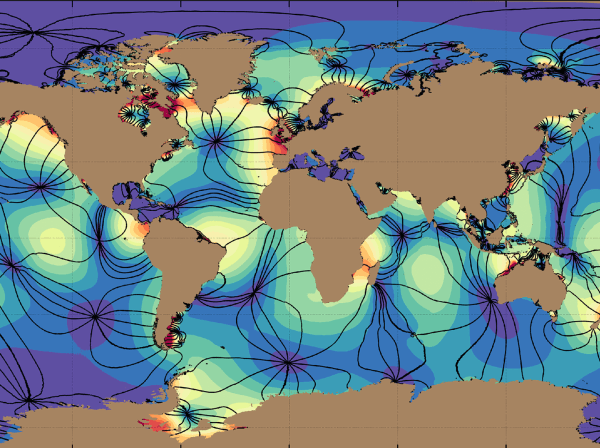
Global Barotropic Tide Modeling Using Inline Self‐Attraction and Loading in MPAS‐Ocean
(K. Barton, N. Pal, S. Brus, M. Petersen, B. Arbic, D. Engwirda, A. Roberts, J. Westerink, D. Wirasaet, M. Schindelegger,
2022. JAMES, 14(11), e2022MS003207.)
https://doi.org/10.1029/2022MS003207
Modelling global tides with MPAS-O and assessing inline self-attraction and loading effects.
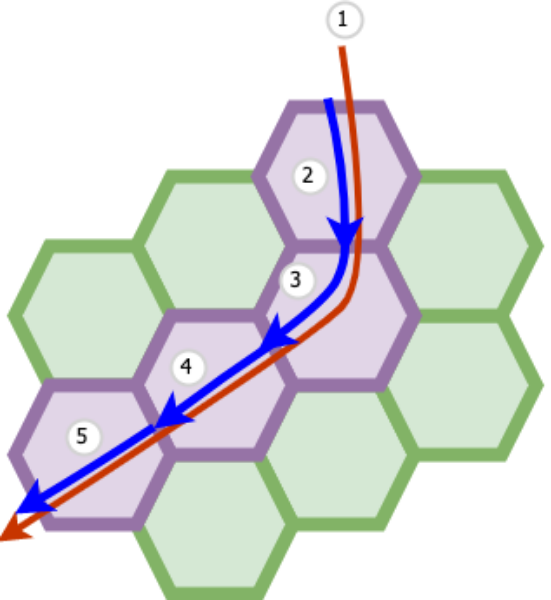
Advances in hexagon mesh-based flow direction modeling
(C. Liao, T. Zhou, D. Xu, R. Barnes, G. Bisht, H. Li, Z. Tan, T. Tesfa, Z. Duan, D. Engwirda, R. Leung, 2021.
Adv. Water Resources, 160, 104099.)
https://doi.org/10.1016/j.advwatres.2021.104099
The formulation for an unstructured mesh river routing scheme proposed for E3SM.

Comparing numerical accuracy and stability for different horizontal discretizations in MPAS-Ocean
(S. Calandrini, D. Engwirda, M. Petersen, 2021.
Ocean Modelling, 168, 101908.)
https://doi.org/10.1016/j.ocemod.2021.101908
An assessment of the order of accuracy of the TRiSK formulation used in MPAS-O.

MPAS-Seaice (v1.0.0): Sea-ice dynamics on unstructured Voronoi meshes
(A. Turner, W. Lipscomb, E. Hunke, D. Jacobsen, N. Jeffery, D. Engwirda, T. Ringler, J. Wolfe, 2021.
Geosci. Model Dev., 15, 3721–3751.)
https://doi.org/10.5194/gmd-15-3721-2022
The formulation for the unstructured mesh sea-ice dynamical core used in E3SM.

Australian tidal currents – assessment of a barotropic model (COMPAS v1.3.0 rev6631)
with an unstructured grid (D. Griffin, M. Herzfeld, M. Hemer, D. Engwirda,
Geosci. Model Dev., 14, 5561–5582, 2021.)
https://doi.org/10.5194/gmd-14-5561-2021
Use of the unstructured COMPAS model to simulate tidal dynamics in the Australian coastal zone.

Fast Mapping onto Census Blocks (J. Kepner, A. Kipf, D. Engwirda, N. Vembar, M. Jones, L. Milechin, V. Gadepally, C. Hill, T. Kraska, W. Arcand, D. Bestor, W. Bergeron, C. Byun, M. Hubbell, M. Houle, A. Kirby, A. Klein, J. Mullen, A. Prout, A. Reuther, A. Rosa, S. Samsi, C. Yee, P. Michaleas, IEEE High Performance Extreme Computing, 2020.) https://doi.org/10.1109/HPEC43674.2020.9286157
Very large scale spatial indexing for tracking COVID-like epidemics.

A Coastal Unstructured Model using Voronoi Meshes and C-grid Staggering (M. Herzfeld,
D. Engwirda and F. Rizwi, 2020. Ocean Modelling, 148, 101599)
https://doi.org/10.1016/j.ocemod.2020.101599
A description of COMPAS: an unstructured coastal ocean modelling framework developed at CSIRO, Australia.
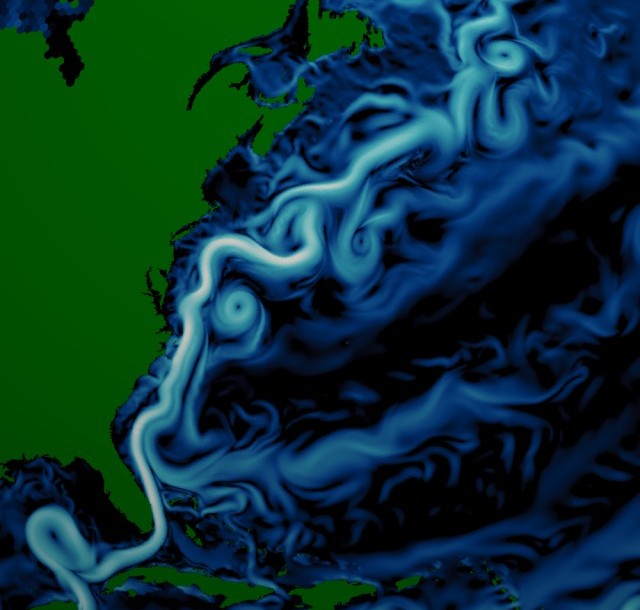
MPAS-Ocean Simulation Quality for Variable-Resolution North American Coastal Meshes (
K. Hoch, M. Petersen, S. Brus, D. Engwirda, K. Rosa, P. Wolfram, A. Roberts, 2020. JAMES, 12(3), e2019MS001848)
https://doi.org/10.1029/2019MS001848
How robust is MPAS-Ocean wrt. aggressive variable resolution configurations refined in the US coastal zone?

Generalised primal-dual grids for unstructured co-volume schemes (D. Engwirda, 2018.
J. Comp. Phys., 375, 155-176)
https://doi.org/10.1016/j.jcp.2018.07.025
An algorithm for the construction of 'weighted' Delaunay/Voronoi pairs (a.k.a. Laguerre/Power tessellations) to build 'optimal' orthogonal grids for staggered discretisations.

JIGSAW-GEO (1.0): locally-orthogonal staggered unstructured grid generation
for general circulation modelling on the sphere (D. Engwirda, 2017, Geosci. Model Dev., 10, 2117-2140)
https://doi.org/10.5194/gmd-10-2117-2017
JIGSAW's spherical meshing algorithm; designed to generate high-quality unstructured grids for global ocean/atmospheric modelling.
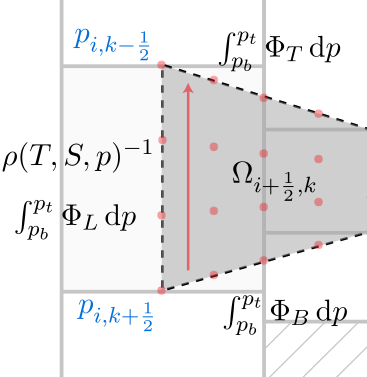
High-order accurate finite-volume formulations for the pressure gradient force in layered ocean models.
(D. Engwirda, M. Kelley, & J. Marshall, 2017, Ocean Modelling, 116, 1-15)
https://doi.org/10.1016/j.ocemod.2017.05.003
A finite-volume formulation for the pressure-gradient force in 'generalised' coordinate ocean models.

Conforming restricted Delaunay mesh generation for piecewise smooth complexes.
(D. Engwirda, 2016, Procedia Engineering, 163, 84-96
http://dx.doi.org/10.1016/j.proeng.2016.11.024
A description of JIGSAW's 'restricted' Frontal-Delaunay algorithm for meshing surfaces/volumes with 'sharp-features'.
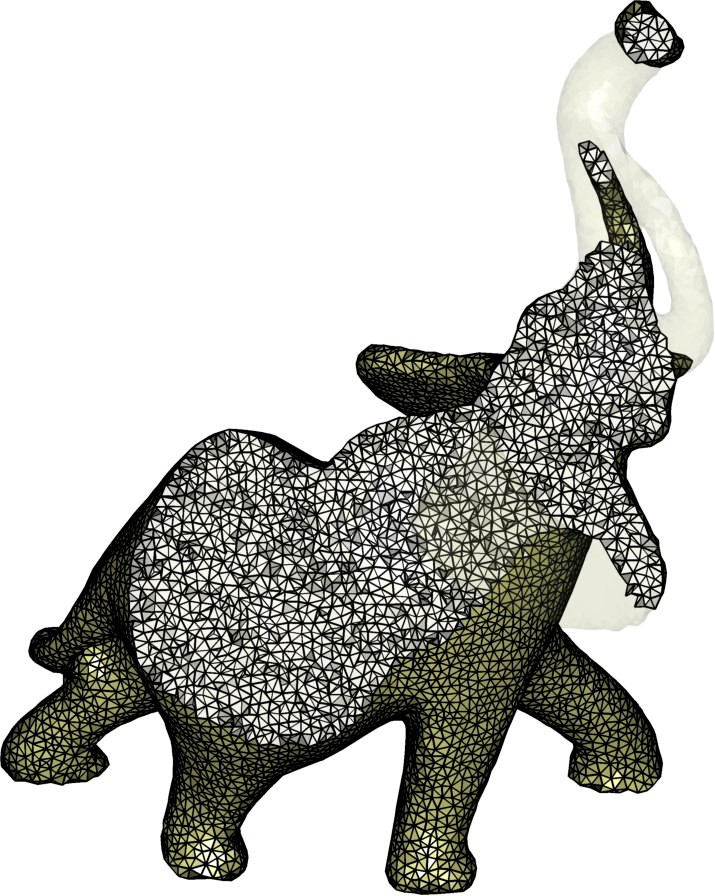
Voronoi-based point-placement for three-dimensional Delaunay-refinement.
(D. Engwirda, 2015, Procedia Engineering, 124, 330-342
http://dx.doi.org/10.1016/j.proeng.2015.10.143
A description of JIGSAW's 'off-centre' Delaunay-refinement strategy for meshing three-dimensional volumes.

On the formulation of environmental fugacity models and their numerical solutions.
(M. Bates, M. Bigot, R. Cropp, D. Engwirda, C. Friedman & D. Hawker, 2016,
Environmental Toxicology and Chemistry, 35 (9), 2182-2191
http://dx.doi.org/10.1002/etc.3403
A analysis of fugacity models, focusing on consistent, mass-based fomulations.
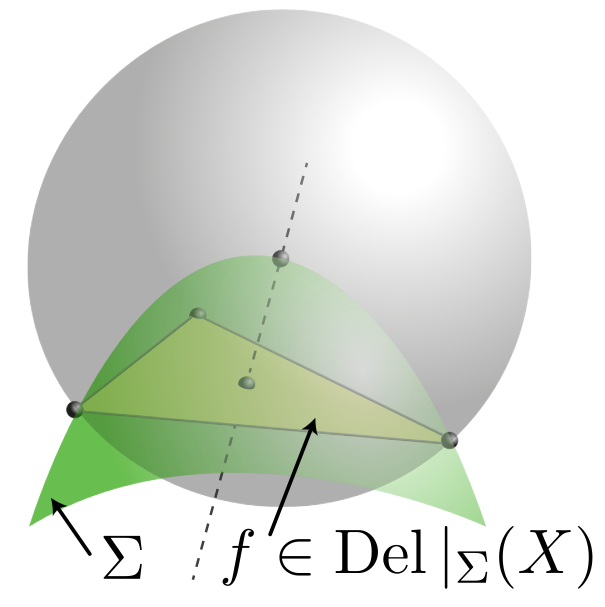
Off-centre Steiner points for Delaunay-refinement on curved surfaces.
(D. Engwirda & D. Ivers, 2016, Computer-Aided Design, 72, 157-171
https://doi.org/10.1016/j.cad.2015.10.007
A description of JIGSAW's 'off-centre' Delaunay-refinement strategy for meshing curved surfaces.

Face-centred Voronoi refinement for surface mesh generation.
(D. Engwirda & D. Ivers, 2014, Procedia Engineering, 82, 8-20
http://dx.doi.org/10.1016/j.proeng.2014.10.364
A description of JIGSAW's 'off-centre' Delaunay-refinement algorithm for meshing curved surfaces.
REPORTS
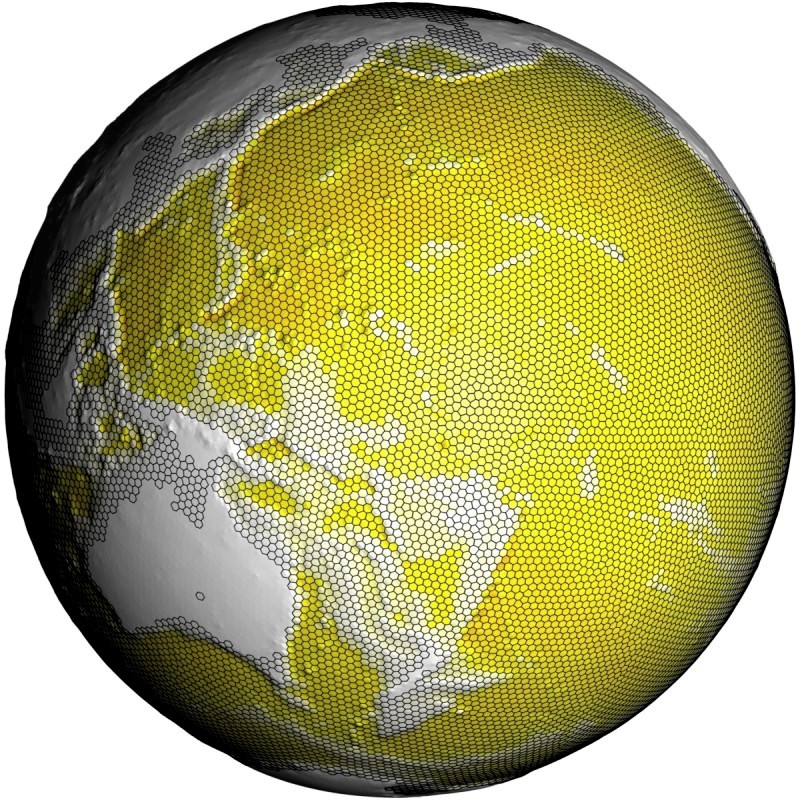
Multi-resolution unstructured grid-generation for geospatial applications on the sphere,
(D. Engwirda, Research Note, International Meshing Roundtable, 2015)
arXiv preprint arXiv:1512.00307
Initial exploration of spherical mesh generation using JIGSAW.
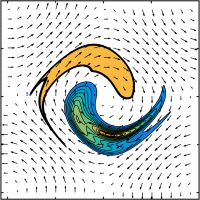
A WENO-type slope-limiter for a family of piecewise polynomial methods,
(D. Engwirda and M. Kelley, NASA Tech. Report, 2015)
arXiv preprint arXiv:1606.08188
A description of the WENO-limited PQM/PPM reconstruction techniques used in our finite-volume and arbirary lagrangian-eulerian algorithms.
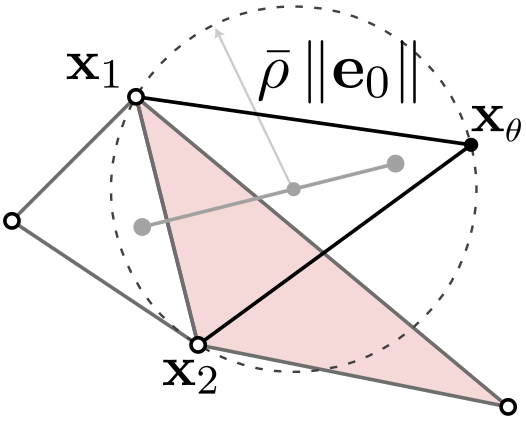
Locally-optimal Delaunay-refinement and optimisation-based mesh generation,
(D. Engwirda, September 2014, Ph.D Thesis, School of Mathematics and Statistics, The University of Sydney)
http://hdl.handle.net/2123/13148
My Ph.D. thesis, introducing the various 'restricted' Frontal-Delaunay refinement algorithms and mesh-optimisation techniques used in JIGSAW.
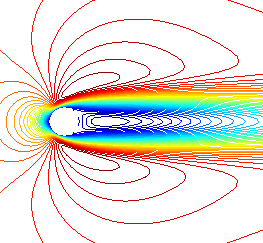
Unstructured mesh methods for the Navier-Stokes equations, (D. Engwirda, November 2005, Undergraduate Honours Thesis, School of Aerospace, Mechanical and Mechatronic Engineering, The University of Sydney)
My undergraduate honours thesis, describing an unstructured finite-volume type solver for the unsteady Navier-Stokes equations.
ART/SCIENCE WORKS (WITH SARA MORAWETZ)

Metric Units for the Solar System: [a set of 'metric units' curated for each planetary body]. The original metric system was designed in accord with the Earth -- reflecting its size, its spin; the relationship between the mass and volume of its constituent elements. What if humanity had been born elsewhere though? Should other planets be denied the autonomy to determine their own systems? Is the metric system universal, or simply a kind of Earth-centric colonialism?
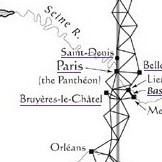
étalon: [A performative walk in search of the metre]. We measure only by measuring against; a self-reflexive act of standardisation through which we order society [and self as a consequence]. To measure is to run from chaos; to divest oneself of natural entropy; to know space, place and purpose with certainty. By surveying the Paris meridian, Sara and a team of female artists will measure the Earth's curvature and create a new 'metre' through physical action.
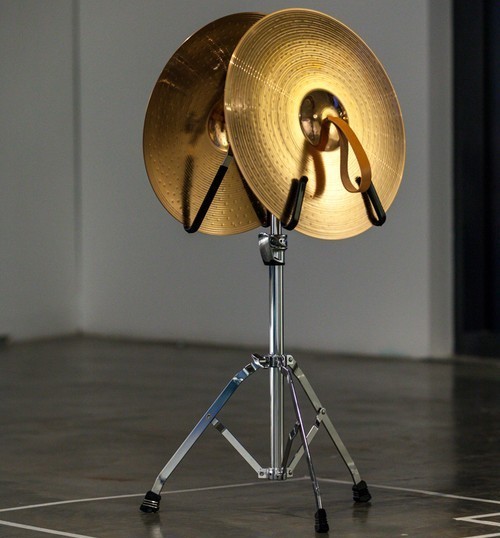
61/60: [A series of 1-second performances celebrating leap-seconds]. The leap-second is the 'force' by which the sun is held overhead at midday, and without it our time would become unfastened to the solar-cycles in which it is steeped. Through haphazard and listless drift, we would eventually find the passage of our star bore little relation to the movement of our clocks. Striking a pair of cymbals coincident with each event, Sara tracks this unfolding discontinuity.
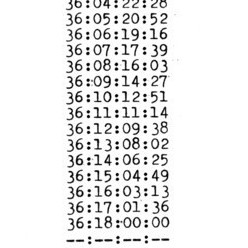
How the Stars Stand: [An investigation of time as measured on Mars]. Our experience of time is not constant, rather, it flexes and yields to the nature of our passage through space. Bound to Earth, this concept seems imperceptible, for we know no time but our own. Yet as we chart our path around the sun, revolving on a familial axis, time operates differently elsewhere. Living in open-source gallery for 36 Martian 'sols', Sara charted the divergence of planetary 'time'.